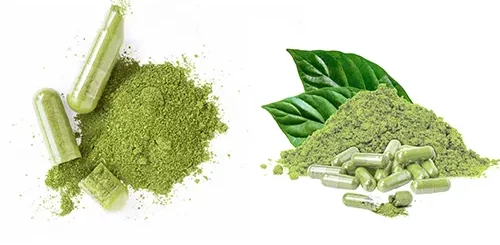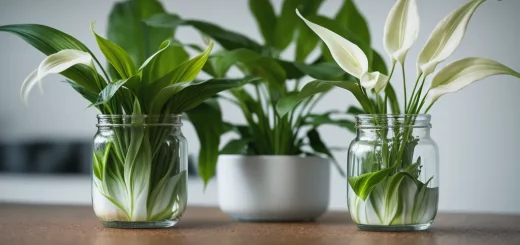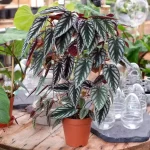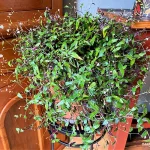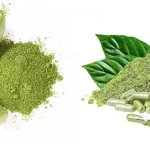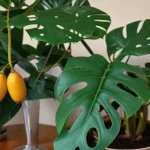Spotlight on the Majestic Monstera Deliciosa Fruit
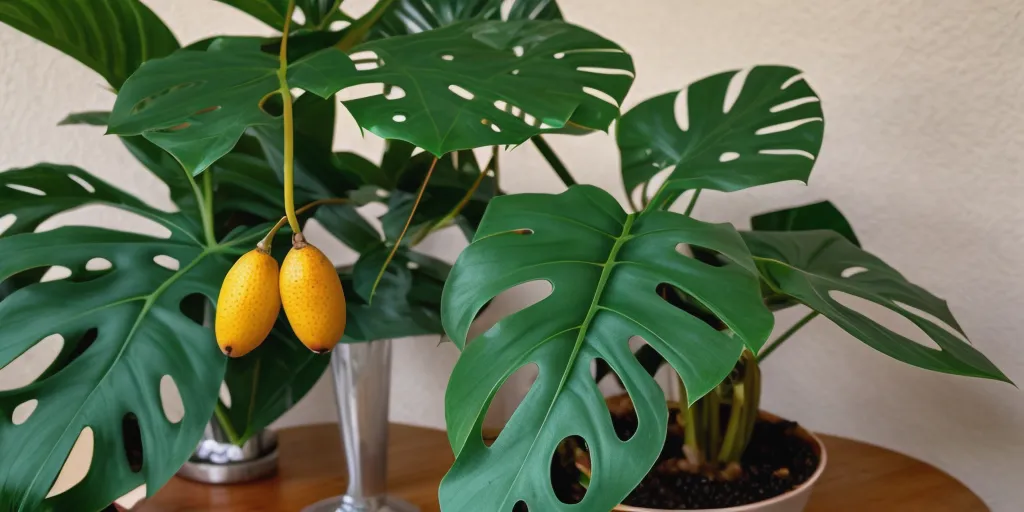
Table of Contents
Introduction to Monstera Deliciosa Fruit:
The Monstera Deliciosa, often simply referred to as “Monstera,” is a plant that has taken the world of interior design by storm. With its iconic split leaves and tropical vibe, it’s a favorite among plant enthusiasts and designers alike. But beyond its Instagram-worthy appearance lies a lesser-known secret: the Monstera Deliciosa bears a unique fruit that’s as intriguing as the plant itself. Hailing from the rainforests of Central America, this plant not only offers aesthetic appeal but also a taste of the tropics with its fascinating fruit, which boasts a blend of flavors and a distinctive appearance.
1. The Monstera Plant: More than Just Iconic Leaves:
Monstera Deliciosa’s charm extends beyond its captivating foliage. While its leaves have become synonymous with modern, chic interior decor, there’s more to this plant that deserves recognition.
1.1. The Popularity of Monstera Deliciosa in Interior Design:
Over the past few years, the Monstera Deliciosa has risen in popularity, gracing the pages of home decor magazines, social media feeds, and trendy cafes. Its large, split leaves, often described as “swiss cheese” due to their unique perforations, make it a statement piece in any room. The plant’s ability to thrive indoors and its adaptability to various lighting conditions have further cemented its status as a must-have for plant lovers and interior designers.
1.2. The Lifecycle of the Monstera Plant and When It Bears Fruit:
While many are familiar with its leaves, few are aware of the Monstera’s fruit-bearing capabilities. As the plant matures, typically when it’s around three years or older and under optimal conditions, it produces a spadix covered in a hood-like structure called a spathe. This is the beginning of the fruiting process. Over time, the spadix develops into a fruit that resembles an ear of corn with hexagonal scales. This fruit, often referred to as the “fruit salad plant” due to its mix of flavors, is a testament to the Monstera’s tropical origins and its multifaceted nature.
2. Understanding the Monstera Deliciosa Fruit:
The fruit of the Monstera Deliciosa, while not as widely recognized as its iconic leaves, is a marvel in its own right. Its unique appearance, delightful taste, and nutritional properties make it a fascinating subject of exploration.
2.1. Physical Description: From an Odd-Looking Ear of Corn to a Tropical Delight:
At first glance, the Monstera fruit might seem peculiar. It resembles an elongated ear of corn, covered in green, hexagonal scales. As the fruit matures, these scales begin to lift at their tips, revealing the creamy flesh underneath. The entire ripening process gives the fruit a dynamic appearance, as it slowly transforms from a solid green to a mosaic of scales revealing the tantalizing fruit beneath.
2.2. The Taste Profile: A Fusion of Pineapple, Banana, and Jackfruit:
One of the most captivating aspects of the Monstera fruit is its taste. Those who’ve had the pleasure of tasting it often describe it as a delightful fusion of pineapple, banana, and jackfruit. The fruit’s creamy texture combined with its sweet and slightly tangy flavor makes it a tropical treat that tantalizes the taste buds.
2.3. Nutritional Benefits and Value:
Beyond its taste, the Monstera fruit is packed with nutritional benefits. It’s a good source of Vitamin C, potassium, and dietary fiber. Additionally, it contains antioxidants and essential amino acids, making it not just a tasty treat but also a health-boosting one.
3. Harvesting and Consuming the Monstera Deliciosa Fruit:
While the Monstera fruit is a delightful treat, it’s essential to approach its consumption with knowledge and caution. The ripening process is crucial to ensuring the fruit is safe to eat and enjoyable.
3.1. Recognizing When the Fruit is Ripe and Ready:
The key to enjoying the Monstera fruit is patience. As the fruit ripens, its green scales will begin to lift and fall off naturally, revealing the creamy, edible flesh underneath. It’s essential to wait until the scales lift on their own, indicating that the fruit is ready to be consumed.
3.2. The Importance of Patience: The Risk of Consuming an Unripe Monstera Fruit:
Eating the fruit before it’s fully ripe can lead to discomfort, as unripe Monstera fruit contains calcium oxalate crystals, which can cause irritation to the mouth and throat. It’s crucial to wait for the fruit to ripen fully, allowing the scales to detach naturally, to ensure a safe and pleasant eating experience.
3.3. How to Safely Peel and Eat the Fruit:
Once the fruit is ripe and the scales have begun to fall off, it can be safely consumed. Start by gently removing any remaining scales. The exposed flesh can be cut into slices or chunks. It’s best enjoyed fresh, either on its own or as a part of fruit salads, smoothies, or desserts.
4. Cultivating Monstera Deliciosa Fruit for Production:
Growing Monstera Deliciosa with the aim of fruit production requires a deeper understanding of its needs and lifecycle. While the plant is relatively easy to care for as a decorative indoor plant, encouraging it to bear fruit necessitates specific conditions and care.
4.1. Ideal Growing Conditions and Care:
For Monstera Deliciosa to produce fruit, it needs to be in a mature state and provided with optimal growing conditions. This includes bright, indirect sunlight, well-draining soil, and consistent moisture without waterlogging. A high humidity environment, reminiscent of its tropical origins, can also boost its growth and fruiting potential. Regular fertilization, especially during the growing season, can provide the necessary nutrients for fruit production.
4.2. Pollination and the Role of Natural Pollinators:
In its natural habitat, the Monstera Deliciosa is pollinated by specific types of beetles. In domestic settings, especially in regions outside its native range, natural pollination can be a challenge. For those keen on fruit production, manual pollination using a soft brush can be an effective method. Transferring pollen from the male to the female parts of the flower during its receptive phase can lead to successful fruiting.
4.3. Common Challenges and How to Overcome Them:
Some challenges faced by Monstera growers include inadequate light, pests like spider mites and scale, and over or under-watering. Ensuring the plant receives bright, indirect light, regular but not excessive watering, and periodic checks for pests can mitigate these issues. If the plant doesn’t fruit in the initial years, patience is key. As the plant matures and acclimatizes to its environment, the chances of fruiting increase.
5. Beyond Consumption: Other Uses of Monstera Fruit:
While the Monstera fruit is a delightful treat to eat, its uses extend beyond mere consumption. Its unique flavor profile, potential health benefits, and cultural significance make it versatile and intriguing.
5.1. Incorporating Monstera Fruit in Culinary Dishes:
The tropical flavors of the Monstera fruit make it a fantastic addition to various dishes. It can be used in fruit salads, blended into smoothies, or even made into jams and jellies. Its unique taste can also complement desserts, adding a tropical twist to cakes, tarts, and ice creams.
5.2. Potential Medicinal Properties and Uses:
While more research is needed, some sources suggest that Monstera fruit might have medicinal properties. Its high Vitamin C content can boost the immune system, and its antioxidants can offer health benefits. However, it’s essential to approach any medicinal use with caution and consult with health professionals.
5.3. The Role of Monstera Fruit in Cultural and Traditional Practices:
In some regions, especially within its native range, the Monstera fruit holds cultural and traditional significance. It can be used in ceremonies, as offerings, or even as a symbol of fertility and abundance. Its unique appearance and taste have also led to its incorporation in folklore and local tales.
Conclusion:
The Monstera Deliciosa, with its iconic split leaves, has undoubtedly captured the hearts of many. Yet, its fruit remains a hidden gem, waiting to be discovered and appreciated. This multifaceted fruit, with its unique taste, appearance, and potential benefits, is a testament to the wonders of nature. It reminds us that even in the most familiar things, there are aspects waiting to be explored and understood. As we delve deeper into the world of plants, it’s essential to approach them with curiosity, recognizing that there’s always more to learn and appreciate. The Monstera Deliciosa and its fruit invite us on a journey of discovery, urging us to look beyond the surface and appreciate the depth and richness of the natural world.
Have you had the pleasure of tasting the Monstera fruit? Or perhaps you’ve incorporated it into a unique dish? We’d love to hear from you! Share your experiences, recipes, or any tips you might have about caring for and enjoying this tropical delight. Your insights and stories can inspire others to embark on their own plant adventures. So, drop a comment below, ask questions, and let’s engage in a fruitful discussion about the wonders of the Monstera Deliciosa fruit!
